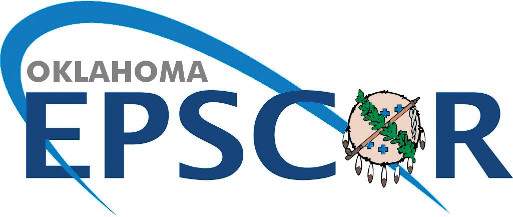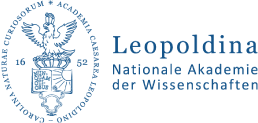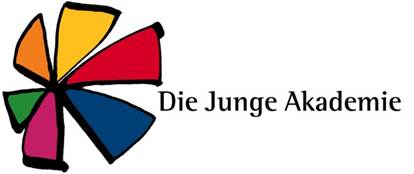Research Funding
Oklahoma EPSCoR
National Science Foundation (Oklahoma EPSCoR Program): Award OIA-1301789
USGS
US Geological Survey: Award G15AP00132
European Commission
European Commission: Award IOF-235979
Leopoldina
German National Academy of Sciences Leopoldina
BBAW
Berlin-Brandenburg Academy of Sciences and Humanities (BBAW)
German Young Academy
German Young Academy
Improving Resilience for the Rio Grande Coupled Human-Natural System
Understanding how to manage scarce water resources during drought is one of the great challenges we face as a society. The Rio Grande River Basin presents one of those great challenges. The Rio Grande – running through Colorado, New Mexico, Texas, and Mexico – has, traditionally, been managed by different sets of laws, rules governing water rights, and water authorities that control the use of water. Our team focuses on the following issues: 1) Socio-economic evaluation of water problems in the Rio Grande River With a set of different economic, environmental, and social indicators we are developing a sustainability index for water use in the Rio Grande River. We also analyze trends in water resource use since 2002 in different Rio Grande states and counties. 2) Contingent valuation of ecosystem services in the Rio Grande River The project evaluates willingness-to-pay (WTP) for ecosystem services, including improved water quality, in the Rio Grande river. The results of this project can help regional stakeholders with integrated water management planning and sustainability measures to improve drought resilience in the Rio Grande River basin.
Economics of Food Waste
According to the Food and Agriculture Organization (FAO), approximately 30% of agricultural production (1.6 billion tons of food) is lost every single year. Food wastage is linked to economic and environmental losses occurring in the production chain from the farm to the table. While many studies address the problem of food waste by analyzing consumption patterns, little research has been done on the economics of food waste and sustainability of agricultural production related to agricultural and food losses and waste. This project seeks to address this problem by monetizing resource losses (e.g., energy, water, agricultural land), environmental impacts (i.e., methane emissions), and contribute to the discussion on biodiversity loss in the food production process in the US. The analysis and results can help raise awareness and incentivize households and governments to design and implement cost-effective measures for food waste reduction. We also collaborate with the Catholic University of Eichstaett Ingolstadt in Germany on socio-economic aspects determining human behavior and food waste. A comparative study between the US and Germany will determine which approaches combatting food waste are most effective.
Groundwater and Soil Moisture as Indicators of Drought and Potential Socio-Economic Implications
Recent droughts in Oklahoma have drawn attention to a serious question about availability of freshwater resources in the short and long-term. Oklahoma was significantly affected by the 2011-2013 droughts with 95% of the state areas under exceptional drought (Drought Monitor, 2015). Extreme droughts have been recurring cyclically, causing considerable economic losses, while prospects for future water availability are worrisome. Predictions about drought in Oklahoma and at the national level are normally based on drought indicators depicting mainly climatic, hydrologic and soil conditions, or surface water resources. Those indicators, however, do not represent groundwater levels in the aquifers that are a relevant source of water supply for many sectors in the state, especially agriculture. This research seeks to fill this gap by evaluating changes in Oklahoma’s groundwater levels over the time span of 12 years (2003-2014). Our hypothesis is that groundwater levels decreased considerably with intensified drought. To prove this hypothesis and to provide an interactive assessment and decision support platform, we are working to develop a multidimensional geospatial visualization model. The purpose of the model and the analysis is to: 1) Assess the past and current well water levels in Oklahoma's aquifers, 2) Recognize and analyze patterns in groundwater level changes over time subject to drought, 3) Predict regional groundwater level changes in the future, and 4) Analyze potential socio-economic impacts of those changes. The interactive geospatial model is based on information from USGS water database on 390 wells in Oklahoma and data from the Drought Mitigation Center on drought indexes across all Oklahoma counties. This research can be used by researchers and teachers for educational purposes as well as by policy makers and other stakeholders to prepare for future water scarcity and extreme weather events like drought. Model access link.
Economic Value of Weather Monitoring in Oklahoma
For decades Oklahoma has been affected by extreme weather events, while recent exceptional droughts considerably impacted Oklahoma’s agricultural production covering 78% of the state area. Due to weather variability and uncertainty, accurate and timely weather monitoring information is crucial to farmers for educated agricultural production decisions in the short and long term. Oklahoma Mesonet (the statewide weather monitoring network) has been providing consistent and accurate weather information to farmers (and other groups) for 21 years to help them improve planting, growing, and harvesting decisions, and prevent potential weather-related losses. While several qualitative studies exist that emphasize the relevance of Mesonet weather monitoring information, quantitative research is very limited. This research evaluates economic impacts of Mesonet information on large-scale, medium-scale, and small-scale farmers based on a quantitative analysis and a survey conducted among farmers in all nine climate regions in Oklahoma. The results outline different application venues of weather monitoring information at the farm level and their value as assessed by farmers across Oklahoma, with regional variations in different climate regions. This research can be helpful to farmers, stakeholders and policy makers to determine benefits of weather monitoring information and impacts on agricultural production in the state.
Desalination in the US – Interactive Geospatial and Spatio-Temporal Visualization Model
In the United States, desalination has considerably expanded since the 1950s, reaching a daily production capacity of 2 BGD (billion gallons per day) with around 1336 operating plants as of 2013 (GWI, 2013). Despite this continuous growth, a steady increase in desalination investments and growing demand for water, research on geospatial representation of desalination plants and their characteristics over time does not exist or is very limited. This research aims at filling this gap by developing interactive 5D and 6D geospatial models and a multi-dimensional analysis of desalination trends in the time span 1950–2013. The analysis shows that desalination plants are located mainly on the East and West Coast of the United States, with Florida, California, and Texas leading in the national desalination sector. Despite the geographical proximity to the sea, most of the plants use brackish groundwater due to economic factors related to the desalination process itself and the disposal of the highly saline byproduct – brine. The models can be used both for educational and interdisciplinary research purposes and help with determining socio-economic viability of establishing prospective desalination plants in different regions in the future. They can also help support decision makers in solving emergency questions related to water shortages and preparing for long-term water scarcity in different US regions. Model access link.
Socio-Economic Implications of Drought
In 2011, the most severe drought in Texas history caused $7.62 billion in losses in the agricultural sector alone. This research analyzes ripple effects of the 2011 drought in Texas agriculture on the entire state economy retrospectively in an effort to foster discussion on targeted mitigation measures in the long term. By using an Input-Output and social accounting matrix model, direct effects on livestock, cotton, sorghum, wheat, corn, hay, and timber production, as well as indirect effects on other related sectors, and finally induced effects from changing consumers behavior have been estimated. According to the results, the 2011 drought caused economic losses of $16.9 billion in the entire Texas economy and increased the unemployment by around 166,895 people. The agricultural sector alone lost around 106,000 jobs. The cotton farming experienced 91% of revenue losses (as compared to 2010), while the livestock production lost 32% in revenue. The decreased production yields and limited market supply directly influence market prices for those products, which might create additional spillover effects on export and import quantities. The presented analysis can be helpful for designing policies to launch mitigation programs for drought events in the future.
Sustainability of Biofuels Feedstocks
The question of increasing biofuels production and the development of different biofuels production technologies has become controversial. On the one hand, production of corn-based biofuels creates a ‘food/feed vs. fuel’ tradeoff condition, along with subsequent uncertainties for both consumers and producers (farmers). On the other, advanced biofuels (from, e.g., switchgrass, miscanthus, algae), although acknowledged as environmentally friendly, are not available on a large commercial scale yet. In addition, the limited resource availability for the production of biofuels feedstocks and the question of a sustainable biofuels production are major issues impacting decision making. Most recently, climate conditions and the 2011–2012 drought in the US have imposed new uncertainties that need to be considered in policy- making processes. By using a multi-objective optimization model, the paper presents an approach of modeling sustainable biofuels production from conventional and advanced biofuels feedstocks, under the condition of limited resources and uncertainty resulting from incomplete information or missing knowledge about the consequences of possible policy actions.





